Brassica oleracea var. acephala
Kale has quickly become one of my favorite foods.
In addition to having a very distinct flavor, which reminds me of a mild cabbage, it can be a versatile addition to almost any dish.
While health food stores and fad diets want you to think that there is something mystical about the plant, it’s an approachable homegrown treat that can – and should – be added to any garden!
A member of the brassica family, it is in fact related to cabbage. Its pleasantly mild taste makes it perfect for fresh salads and smoothies, as well as in cooked recipes.
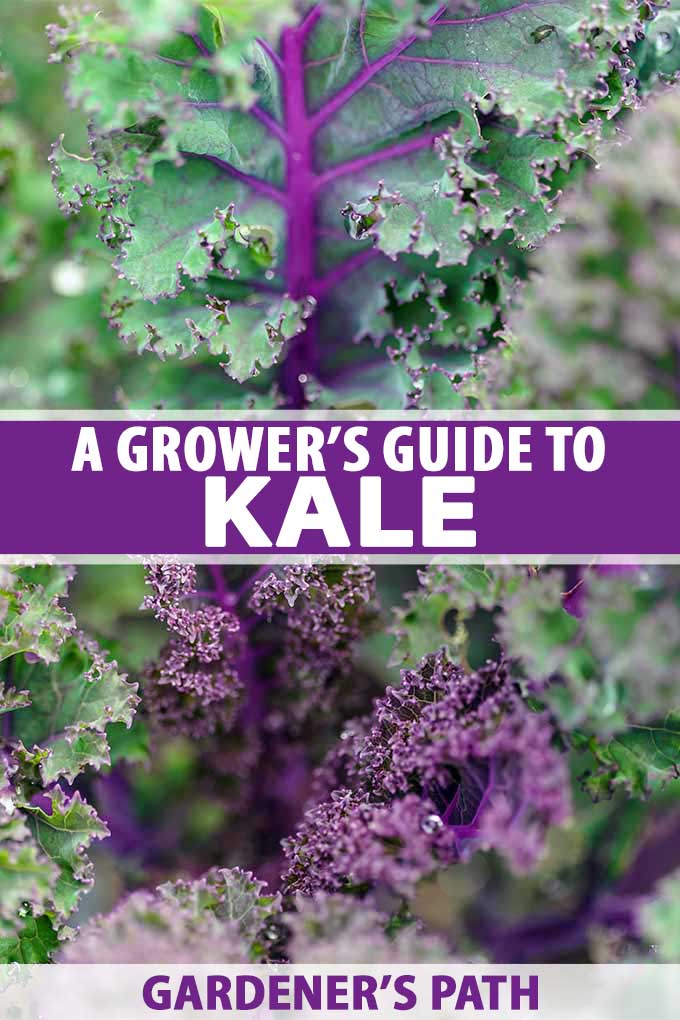
We link to vendors to help you find relevant products. If you buy from one of our links, we may earn a commission.
If you’ve been put off by the big bags of chopped kale found in your grocer’s fridge case, it’s likely because this one type of green is notorious for being tough, stringy, and pungent. Fortunately, there are many other types to choose from:
Curly Leaf
This variety has leaves that are literally curly. It’s more than likely the type of kale you will find in bunches tied by string or rubber bands at the store.
Bumpy Leaf
Tuscan and dinosaur cultivars fall into this category. They have ugly, rough, and slightly deformed-appearing leaves. They are less appealing to use raw in salads, but taste sweet and delicious.
Rape Kale
These are hearty greens that can be grown long into the winter seasons. Their fibrous structure helps them endure cooler temps that can cause more fragile types to wilt. They hold up well in casseroles and soups and can add much-needed texture to soft egg dishes.
Plain or Plain-Leaf
As the name implies, these types have very broad and smooth leaves.
Leaf and Spear
A cross between the plain and curly leaf varieties, both baby and fully mature leaves are delicious.
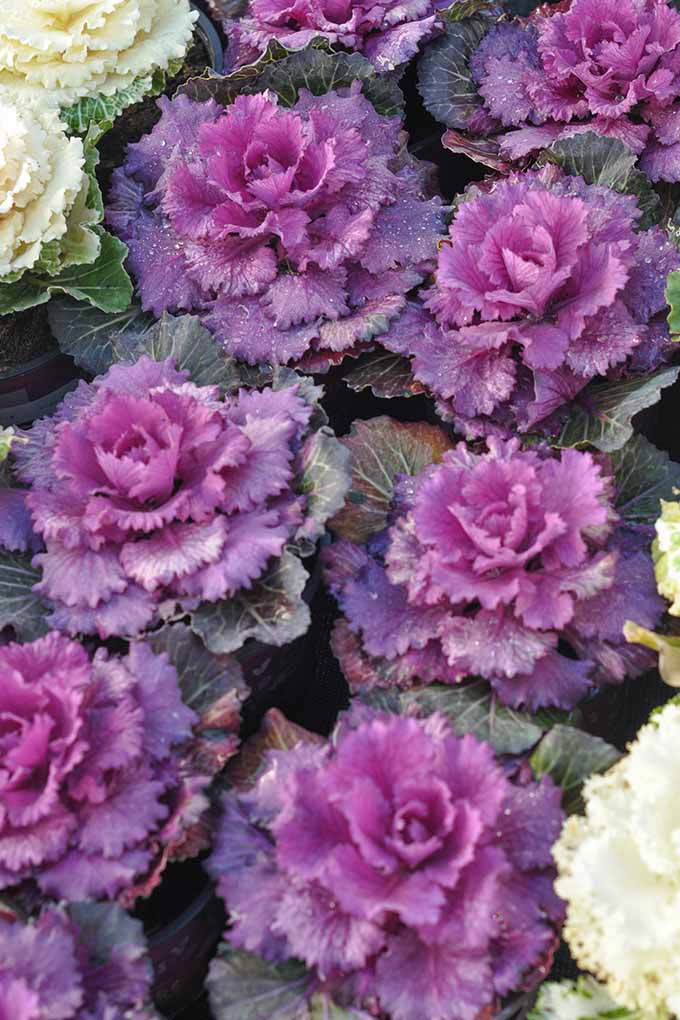
Kale can also be grown strictly for ornamental purposes. While all varieties are edible, you won’t want to eat leaves that grow too large in size. They will be tough and fibrous, and difficult to digest.
Edible and ornamental breeds come in a variety of colors, including blue, red, green, and even purple.
My favorite varieties are currently:
Kamome Flowering – A beautiful ornamental for any flower bed!
Lacinato (Dinosaur) – Bumpy and beautiful, it sautés nicely.
Dwarf Siberian – This type tolerates cold, and can be grown throughout milder winters.
The Best Start for Your Greens
Growing kale is very similar to growing spinach. As I explained in my tutorial on growing spinach, I prefer a raised bed approach for my greens.
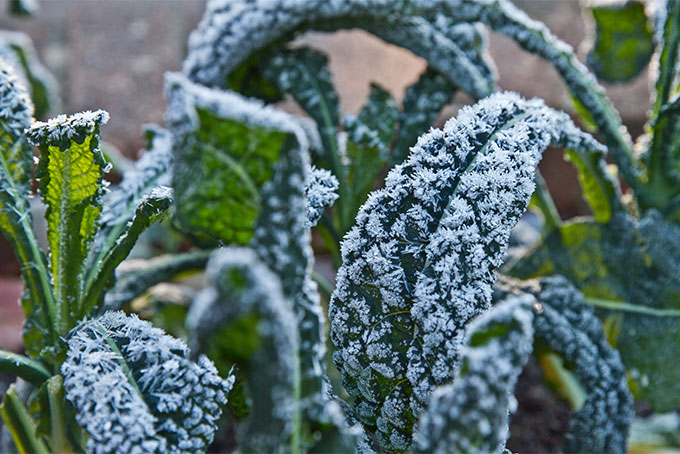
I plant the seeds near leaf lettuce, spinach, and chard in a well-drained plot or box planter. Following the directions on the seed packet, I find that I can usually plant at the same time as other greens, past the early frost and when danger of snow has passed.
Kale needs full sun in the spring and fall but a little shade is helpful if your are trying to grow it during the summer months..
Putting seeds in the ground a little shallower than recommended can help germination in thick or hard soil. I have had good success with planting a little more than ¼-inch deep, and with each seed about an inch apart.
Thin to no less than 5 inches between plants. If you’ll be allowing them to grow big this is ideal, but I allow one row to be a bit more crowded if I have designated it for early picking. Read more about optimal spacing here.
Kale needs a good amount of water and hates too much heat. An early, dry summer is bad news for this plant, which likes to be pampered with cool weather.
This is why many people do two plantings a year: one in spring, and another in fall. A bit of snow on a late-season plant is actually a good thing that can improve the flavor of the leaves!
Ready for Picking?
Harvesting this treat is a matter of personal preference. Do you like your leaves tiny, juicy, and mild? Pick them early when they’re just a few inches long, and toss with other baby lettuces and microgreens for a delicious salad.
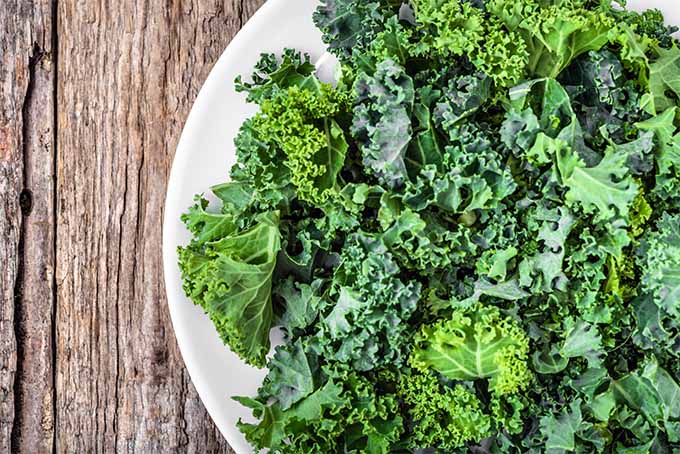
Are you a fan of dense, hearty leaves that you can shred and add to soups and stews? Allow leaves to grow to the size of your hand.
Just be certain to remove the hard stems and ribs in the center before cooking. The flavor of a fresh kale and sausage soup, or this garden sauté, can’t be beat.
Picking is a simple task. Pinch each leaf off at the bottom, leaving at least a few of the inside leaves to help it to continue producing.
I like to use a pair of gardening shears or kitchen scissors for a cleaner cut. I’ve been known to be clumsy with my picking, which can result in pulling the entire plant out by the roots. In soft or loose soil, using a cutting tool ensures the plant stays rooted!
Good News for Big Kale: Soften with a Simple Massage
If you allow your kale to get a bit too big, don’t stress. Leaves of any size can be used in something.
The woodiest leaves can benefit from a little massaging. This technique requires a bit of manual labor, but results in a more tender, edible green. Massaging kale involves manually breaking down tough, fibrous tissue, and it’s very easy:
1. Remove the ribs and woody pieces from the ends of each leaf. Tear off bite-sized chunks and toss into a large bowl.
2. Add a drizzle of olive oil, enough to lightly cover the leaves, and a few pinches of coarse salt.
3. Begin mixing and working the oil into the leaves. This should feel much like kneading bread dough.
4. After about 5 minutes, the leaves should appear darker in color, and they should be more supple. Serve immediately, or dress for a salad.
You can also substitute the olive oil for your choice of oil or vinaigrette.
Be cautious if you have sensitive or broken skin, as the acidic components of many dressings may cause irritation. I often wear gloves for this step.
Storage and Additional Prep Notes
Storing kale is difficult, as it tends to break down and lose flavor quickly. Best to eat it up right away!
Store it the same way you would any other freshly-picked green, such as in a plastic bag lined with dampened paper towels. And wait to wash it until just before serving.
You can also try drying it in your dehydrator, or making kale chips!
Making Green Choices for a Good Life
There’s nothing more exciting than the day when my first kale harvest of the season is ready to be picked. I love it in almost every dish I prepare.
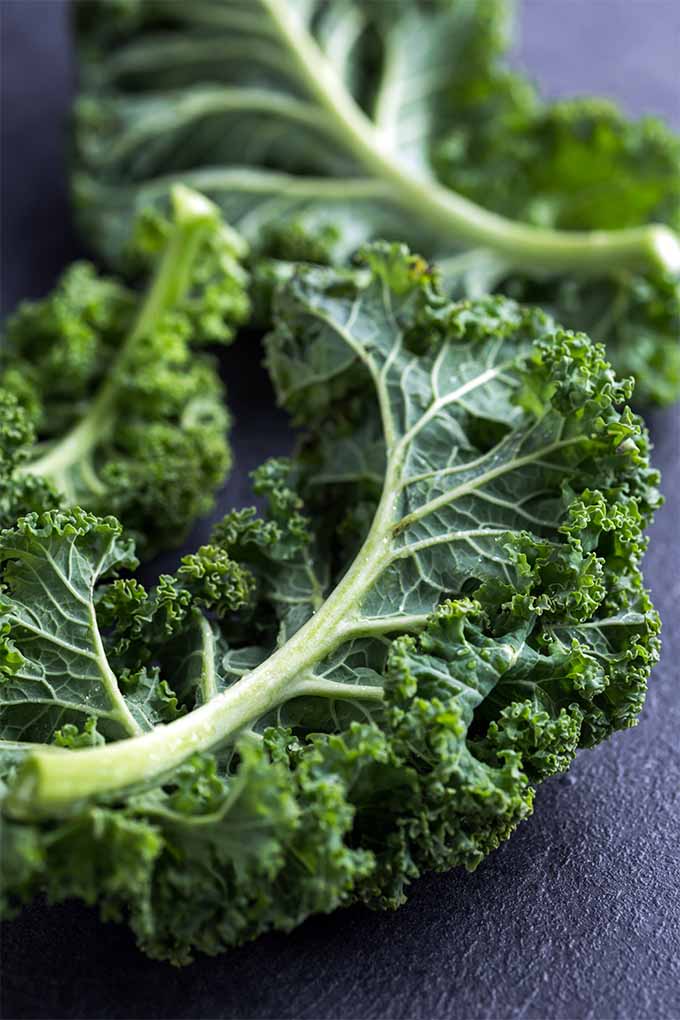
In addition to adding color, it’s a wonderful source of fiber, which is key to good digestion. It’s highly nutritious and I love that I can give my kids a healthy dose of vitamin K in every kale dish.
It’s been credited with preventing a number of health conditions, including inflammatory issues.
What is your favorite way to prepare kale? I’m always looking for new recipe inspiration and would love to hear about your successes in the comments!
If you want to learn more about growing this tasty and healthy plat, be sure to check out all of our kale gardening guides including:
- How to Harvest and Store Kale Seeds
- How to Grow Napini Kale
- How to Grow Sweet and Tender Red Russian Kale
Photo credit: Shutterstock.
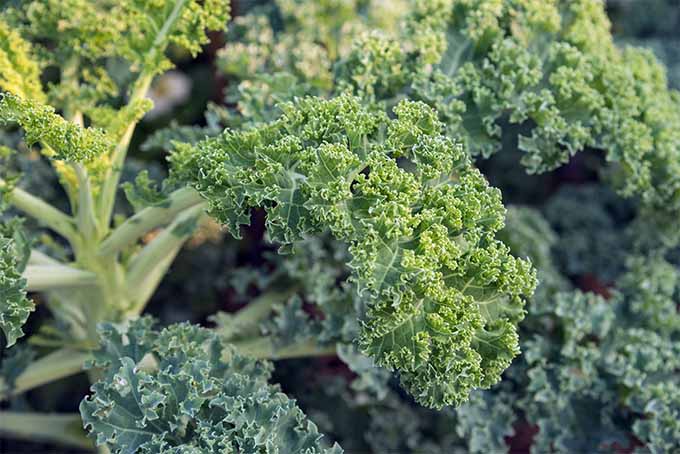
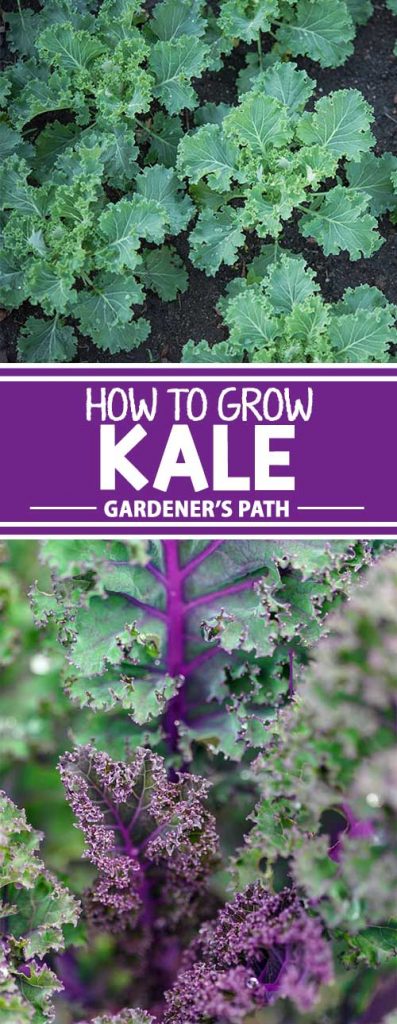
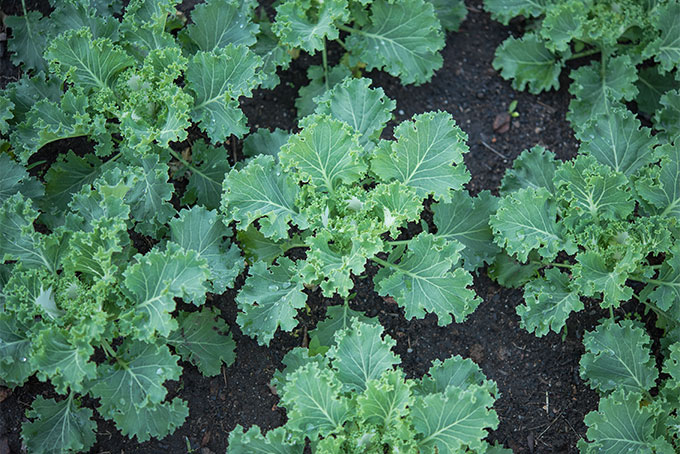
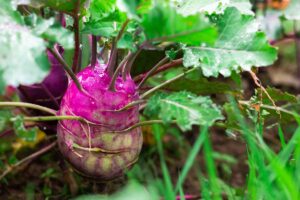
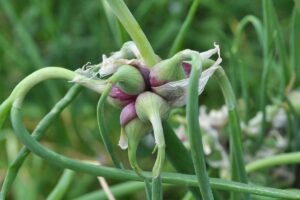
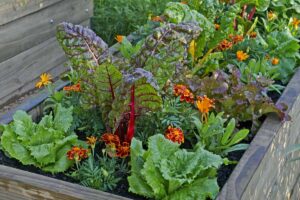
This is not a ‘how to grow kale’ article. You barely touched on soil, amendments, sun and water and instead focused on types of kale and some ideas on how to prepare it. Disappointing.
Some of our shorter guides are in definite need of improvement, but our aim is to make them the best they can be. We’re working on an update to the contents of this article!
Linsey,
My kale has grown a seed pod at the top. No articles I can find say if I should leave it or cut it, or as my neighbor implied, it means the plant is done for the season? It’s early spring. It just started growing. Help?
Kale is a cool weather crop, and warm temperatures will encourage it to bolt as you’ve described. The leaves will become more bitter and tough when the plants begin putting their energy into flower and seed production. If you remove seed pods as you would from other plants (like lettuces and herbs) you may be able to encourage some more tasty leaf growth. Otherwise, you can allow them to flower for the pollinators, remove the spent plants once the flowers are finished, and start a new crop in time for a cooler season harvest. If you like, you can even… Read more »
I am an amateur gardener, and my purple kale was one experiment i didnt have much luck with last summer as they got devoured by bugs. Then i left them through winter. We had snow and frost that finally stopped in February and two of my plants survived! They have produced a gorgeous abundance of tasty leaves that i have been using several times a week for cooking, salads and yummy coleslaw. The last week the weather has been increasingly warmer and both plants are well over 3 ft high now and going to flower. How do i use them… Read more »
Great question, Diana. Kale grows as a biennial in many regions, and it sounds like you’re already on the second half of the cycle. To save seeds, when your plants bolt later in the season, stop harvesting the leaves (they will become more tough and bitter when the plant begins putting its energy into blooming) and allow it to flower and go to seed. When it starts to dry, if you like you can cut the stalks and hang them upside down in a cool, dry location to dry fully. It’s also okay to let them dry on the plant,… Read more »
I am wondering if I can plant kale cuttings? I have these little babies coming off the main stalk and need to know if they will root. It’s curly kale.
Hello Stephanie! You can start a new kale plant from a cutting. It does need to be a variety that grows a fairly substantial stem, like the curly variety you mentioned. If you were growing a variety like lacinato, where the oversize, bladelike leaves grow from very short stems, you’d be out of luck. Here’s how to proceed: Select a shoot that’s strong and healthy and has at least three or four leaves This side shoot should also be strong and healthy, and at least three inches long. Cut the shoot from the main stem where they meet, using a… Read more »